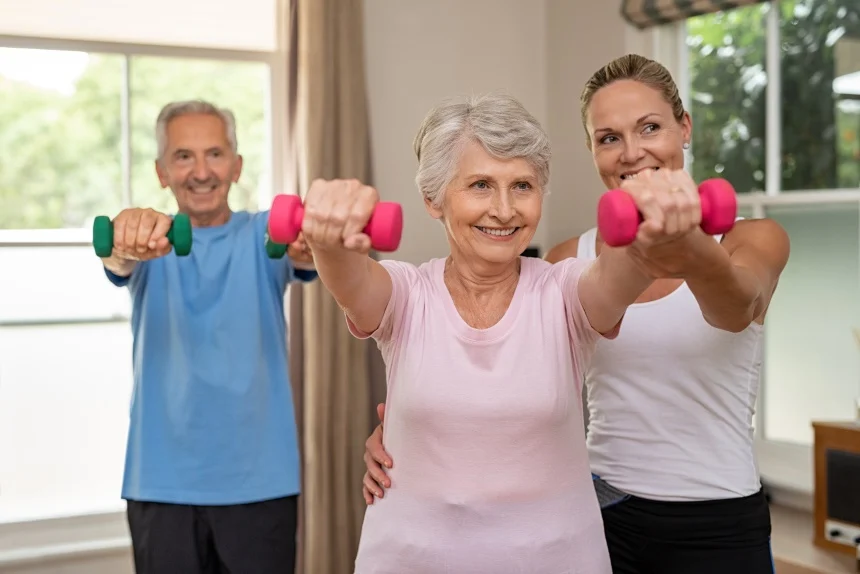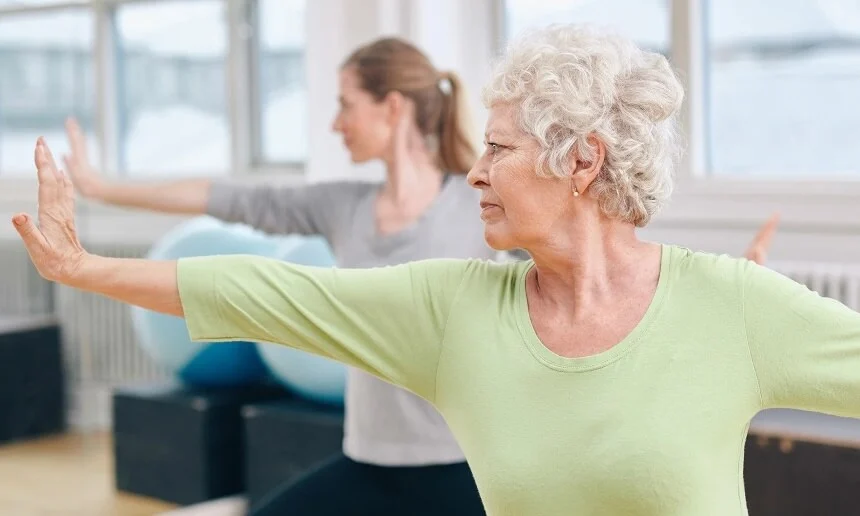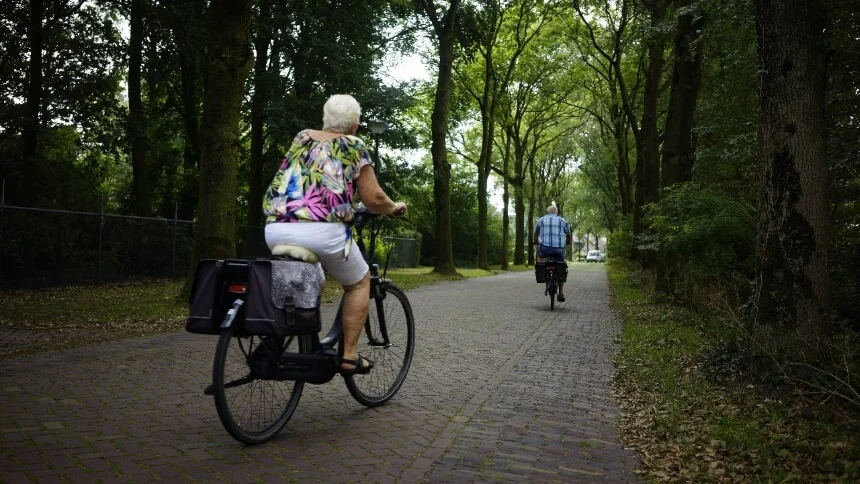
Research has shown that just about 11 minutes of exercise a day can lengthen an adult’s life expectancy. In addition, it limits age-related health issues such as cardiovascular diseases or type 2 diabetes.
But older people have different physical conditions and lifestyles. Therefore, when choosing a suitable sport for them, the objective must be to improve their quality of life and avoid putting them at risk caused by too intense physical activity. For this reason, some sports are more suitable than others for this group of people. And some sports are best avoided due to their high intensities.
In this article, you’ll find out the safest and most beneficial old people sports. We’ll classify these sporting activities according to their intensities so that you won’t be putting pappy or nana under any undue risk of injury or complications.
 There are 1 billion older people (60+ years) in the world as of 2019, according to the World Health Organization (W.H.O.). Yet, despite the benefits sports and physical activities can play on their health life, only a few of these demographics consider them. In fact, over 42% of adults of age 55 and above are inactive, according to a new study which also found out that the cause of inactivity isn’t because of age or physical ability.
There are 1 billion older people (60+ years) in the world as of 2019, according to the World Health Organization (W.H.O.). Yet, despite the benefits sports and physical activities can play on their health life, only a few of these demographics consider them. In fact, over 42% of adults of age 55 and above are inactive, according to a new study which also found out that the cause of inactivity isn’t because of age or physical ability.
However, a couple of minutes of exercise every day can limit age-related health conditions in seniors and prolong their life expectancy. For example, older adults who are regularly physically active have a lower risk of heart disease, stroke, and some forms of cancer.
As we age, our physical strength decreases. This means that we have to maintain our strength and muscle mass to compensate for this loss. The decline occurs in an accelerated process once we pass 70. For example, when we are in our 30s and 40s, we lose about 3-5% of muscle mass and strength every decade. By 70 years, we would have lost 12% of our muscle mass and strength. This age-related loss of muscle mass is called sarcopenia.
Although the thought of exercises may seem paradoxical when the ability to move is lost, there are a lot of practices even for people with disabilities. These can retain and strengthen muscles, joints, and bones while increasing mobility and independence. In some sports, balance, and coordination are also worked on, which influences the reduction of falls.
There is also a psychological factor. People who exercise are less likely to suffer from depression. In both group and individual sports, older people who practice them increase their social ties and leave less room for feelings of loneliness. Both factors are essential if you think about the psychological problems derived from senile dementia.
So now that you’ve realized the need for you, your parents, uncles, aunts, or grannies to be active, there’s a slight caveat, which is why you should read the following safety precautions and tips.
The older adult or person with a disability has different needs and more significant physical limitations than a 50 to 60-year-old person. Therefore, the intensity of the sports older adults play and the duration and frequency must suit their age and physical state. In addition, the type of sport must be of medium or low intensity and never exceed 85% of the maximum heart rate; otherwise, you may experience sore joints and muscles.

Walking is one of the best exercises an older person can do. It is the cheapest sport that exists, and it is also healthy, combats a sedentary lifestyle, and the risk of injury is extremely low. Walking at a fast and constant speed 3 or 4 days a week for about 40 minutes is enough to keep fit.
It also improves the density of the bones, which is why it is highly recommended for everyone. This is especially suitable for women who, after menopause, are at greater risk of suffering from osteoporosis. It’s also ideal for older people with overweight or cardiovascular problems.
It is best to walk in pairs or a group. In this way, the incentive is increased, the social relations of the elderly are improved, and the possibilities of practicing exercise are increased since it is much more boring alone.
This type of walking has become naturalized among older adults as a way of exercising. However, its origin dates back to 1930, when it was practiced as a summer sport.
Nowadays, it is common to see groups of older people with Nordic walking poles in parks. Its popularity is due to the fact that, when pushing the stick, the arms, pectoral muscles, shoulders, and buttocks are exercised.
The cane reduces more than a third of the weight that hits the knees, making it a balanced, harmless, and lightly intense exercise for the elderly.

Dancing is a complete sport and an enjoyable social activity that many older people love. It helps maintain weight, improves balance, and provides greater agility. It also trains the heart and other muscles of the body. So it is highly recommended for people with cardiovascular risk since one hour three times a week is enough to lower cholesterol levels in the blood.
On a psychological level, it produces well-being, relaxation, and joy. Dancing with other people, moving, and socializing increase self-esteem and promote active aging. It is also suitable for improving attention, concentration, and memory.

The movements performed in tai chi are smooth and slow, making them ideal for the elderly. In addition, it is a calm sport that strengthens the joints and tones the body, avoiding the loss of muscle mass.
As it is an exercise that is also mental, it helps slow down the process of cognitive deterioration, making it a way to combat age-related dementias.

Aquafitness activities are also aimed at the elderly. They are of medium intensity and prioritize, above all, postural hygiene. In addition, being an aerobic sport, it can burn a lot of calories.
Another positive aspect of aquafitness is that it also strengthens the body’s muscles. From the social point of view, it favors social relationships, bringing happiness to the elderly. It also improves your rest.
Unlike other sports, golf can be played at any age. It is a low-intensity sport that is dynamic and, at the same time, static. It is also practiced outdoors and is ideal for patients with cardiovascular, metabolic, neurological, and musculoskeletal system diseases.
Golf promotes personal motivation, balance, and coordination of movements promotes walking. In addition, it regulates blood pressure and helps keep triglycerides and cholesterol at bay. Exercises also tone the muscles of the arms, back, waist, chest, abdominals, and lower back.
In addition, it provides social benefits by encouraging interaction with others. In short, it is a sport that favors both physical and mental health and can be practiced by people of all ages and skill levels.

Cycling is one of the most effective exercises to burn fat and raise metabolism. It also increases physical endurance, thus improving the ability of the elderly to carry out their daily tasks. It also helps improve balance and coordination.
Riding a bike also strengthens bones and decreases fractures. In addition, the ligaments and tendons are strengthened, reducing the inflammation of osteoarthritis. It may be advisable to use protectors such as wrist and ankle braces in some specific cases.

Another star sport for older adults is yoga. It is a gentle sport that provides multiple benefits to the body and mind. It improves the entire spinal area and helps correct posture through stretching and tones the muscles of the whole body.
Yoga increases the oxygenation of the body because it teaches the person to breathe well and deeper. Breathing exercises are also valuable stress management and relaxation techniques.
Learning yoga’s various postures and exercises is also good for the mind because it increases concentration, attention, and memory, essential cognitive skills. It also helps avoid the process of cognitive deterioration associated, for example, with diseases such as Alzheimer’s.

Pilates provides many benefits to the various organ systems of the elderly. For example, gentle, slow stretching improves the musculoskeletal system, contributing to its strength and flexibility, and correcting poor body posture.
The main pillar of pilates is to control the rhythm of breathing, so the respiratory system benefits. Breathing control also brings relaxation, releases tension, and improves breathing capacity.
The osteoarticular system is improved with this sport’s regular practice by improving joint movement through low or no impact techniques. As a result, it enhances the tone and elasticity of the ligaments.
Its practice also improves the circulatory system since gentle and slow exercises improve blood flow and the transport of nutrients to the body. As a result, blood pressure levels remain controlled, and arterial hypertension decreases.
Aquatic exercise is a complete sport that trains the muscle and burns calories. Likewise, it improves the state of the bone system, joints, and the ability to move, since the body weighs less under water.
Swimming also whets the appetite and allows the elderly to rest better at night. In addition, it eliminates the excess of stressful substances that our bodies generate, such as cortisol.
Endurance activities such as walking, swimming, aqua gym, voluntary gymnastics, taiji juan, and ballroom dancing are beneficial for seniors. They offer cardiovascular, metabolic, neurological, and musculoskeletal benefits and strengthen the body mass.
Yes, depending on their physical state, older adults can participate in competitions. There are competitions for the elderly such as table tennis, tennis, track and field, triathlon, and volleyball, among others, for seniors. There are even Olympic sports for old people over the age of 50.
However, some sports should not be practiced by this age group. It is better to avoid sports that work the muscles in strength and intensity. These include sports that require much contact and intensity like squash, sprinting, hockey, rugby, handball, wrestling, gymnastics, scuba diving, and water skiing.
Most men will lose up to 30% of muscle mass at age during old age, so it is essential to be active in sports in old age. However, take precautions and be aware of your limits. It is important to consider your abilities carefully when playing any sport. A sport that exceeds your physical capabilities can lead to injury and damage to your health.
Keep in mind that if you stay active and do any of these or other sports at least two times a week, you can get great health benefits. You’ll have greater general well-being, physical resistance, and a lesser sense of fatigue in your day-to-day life. You will also delay your cognitive deterioration (by stimulating neuro-generation). You’ll also reduce the risk of diseases such as diabetes or hypertension, and you will improve your emotional well-being.
So, choose the old people sports you like the most, and start practicing it gradually and without excessive load. If you haven’t done the physical activity for a long time, you must see a medical professional so that they can determine if your body is ready to do the chosen sport.